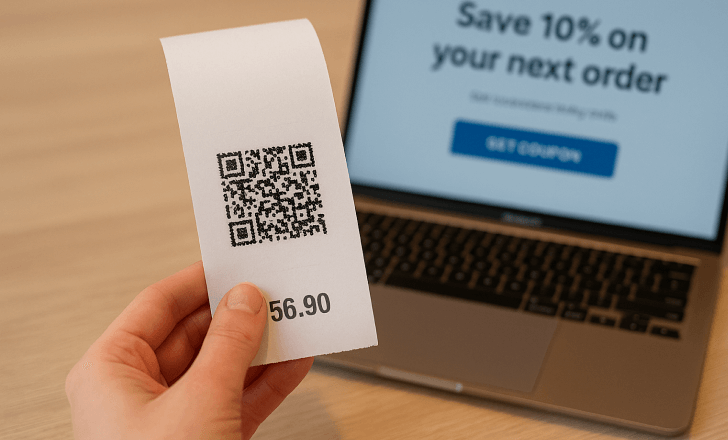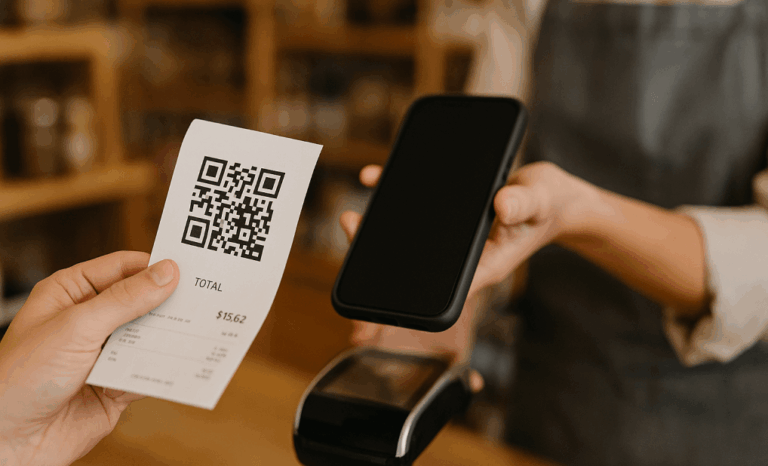Receipts have long been seen as a post-purchase formality. But with the rise of QR code technology, especially dynamic and artistic QR codes, businesses can now turn every receipt into a strategic engagement tool. By placing QR codes on receipts, you invite customers to continue their journey with your brand — whether it’s through feedback, exclusive deals, app downloads, or future purchases.
Why QR codes on receipts are a game changer
When a customer receives a printed receipt or digital receipt in PDF format, they rarely revisit it — unless it offers something more. Adding a QR code transforms this routine interaction into a gateway for personalized marketing, campaign conversions, and lasting customer engagement.
Whether it’s a URL QR code leading to a landing page or a QR code designed for loyalty programs, the point-of-sale becomes a powerful moment to redirect customers and extend the conversation beyond the register.
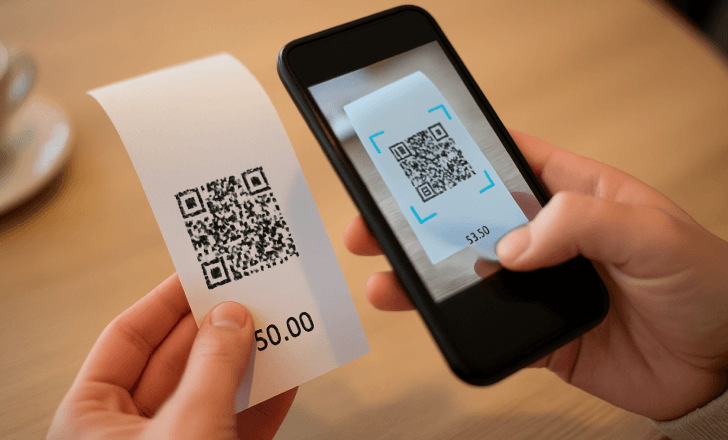
What can a receipt QR code link to?
The flexibility of QR codes means you can match the experience to your exact campaign requirements. For example, businesses often use:
- Landing page QR codes that redirect customers to personalized offers or welcome messages.
- Coupon QR codes to encourage subsequent purchases with limited-time discounts.
- Social media QR codes that help grow followers by linking to your Instagram or TikTok page.
- Feedback forms that make it easy to collect customer feedback on the spot.
- App store links that boost app downloads with a single scan.
Each receipt QR code can serve a different purpose, or you can use one QR code — a dynamic one — that changes based on your strategy.
Are dynamic QR codes better for receipts?
Yes. Dynamic QR codes are the most versatile and effective QR code type for receipts. Unlike static codes, dynamic ones let you update the destination URL at any time, track scan activity, and even adjust the experience based on the user’s behavior or device.
This means you can run multiple promotions using the same single QR code, and adapt it as needed — perfect for printed receipts, where reprinting isn’t an option. With QR Code KIT, businesses can generate dynamic QR codes in bulk and export them in scalable SVG format for high-resolution printing.
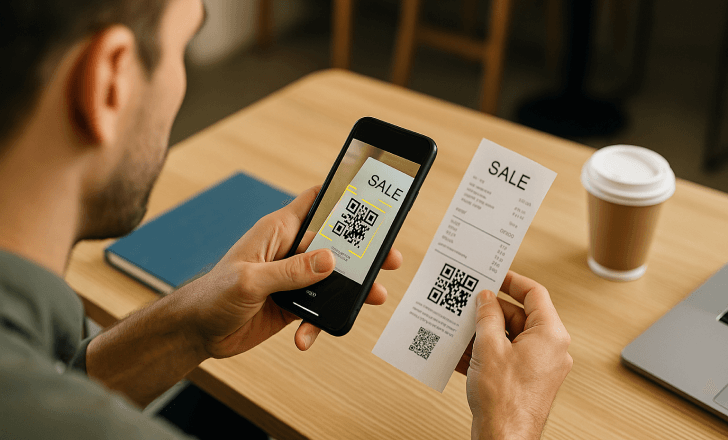
How QR code receipts enhance the customer experience
By simply scanning a QR code with their mobile device, customers are taken to a tailored experience. It could be a thank-you video, a loyalty signup page, or a guide with more information about their purchase. These micro-experiences significantly enhance customer experience, reinforcing the brand relationship after the transaction ends.
Customers no longer have to type a website URL manually or search for your business online. A simple scan is enough to connect them to the content you want to share — instantly and seamlessly.
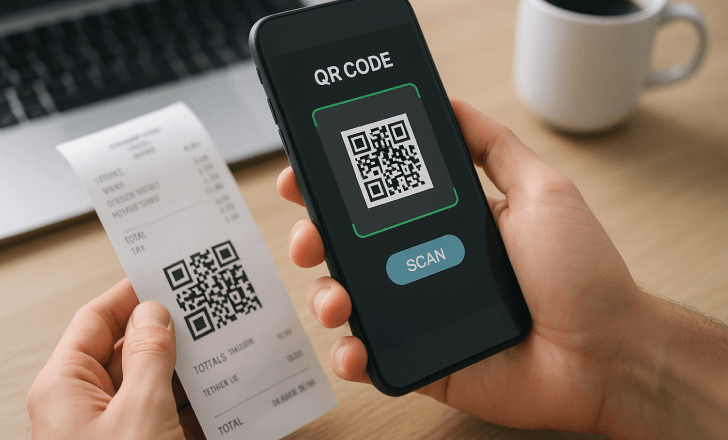
Can you collect customer data through QR codes on receipts?
Yes — ethically and transparently. When the QR code content leads to a feedback form, newsletter signup, or promotion, you can ask customers to voluntarily share customer data like email addresses or preferences. This opens the door to more personalized marketing without being invasive.
You’re not just capturing leads — you’re learning directly from your existing customers. Whether it’s reviews, ratings, or input on products or service, receipt QR codes are a smart way to understand your customer base.
QR codes for reviews, referrals, and retention
Encouraging customers to leave reviews right after a purchase is one of the most powerful ways to build trust. With codes on receipts, businesses can direct happy customers to Google, Yelp, or other platforms to share their experience.
Some even offer special deals or coupons as a thank-you for sharing feedback — increasing the likelihood of subsequent purchases while expanding your online reputation. Others use QR codes to refer friends, earning loyalty points or gifts.
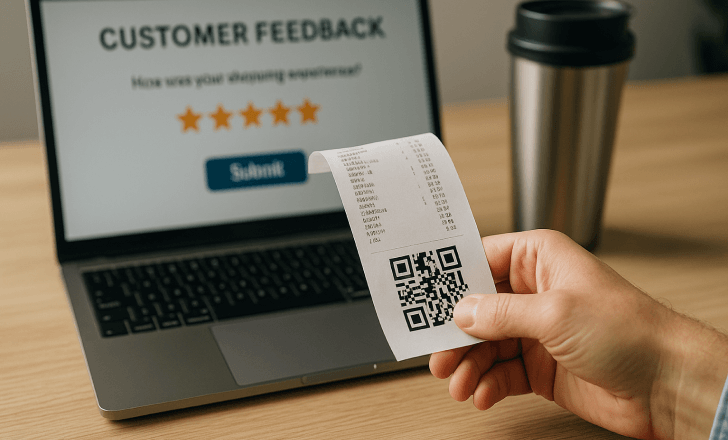
How one QR code can support multiple goals
Thanks to dynamic redirection, you don’t need multiple QR codes. A single QR code can take different customers to different experiences — for example, first-time visitors could land on a welcome offer, while loyal customers might see exclusive promotions.
You can also update the content seasonally, or according to current marketing campaigns. This allows you to scale without sacrificing personalization. QR Code KIT makes this especially easy with a centralized dashboard to manage and edit all your codes.
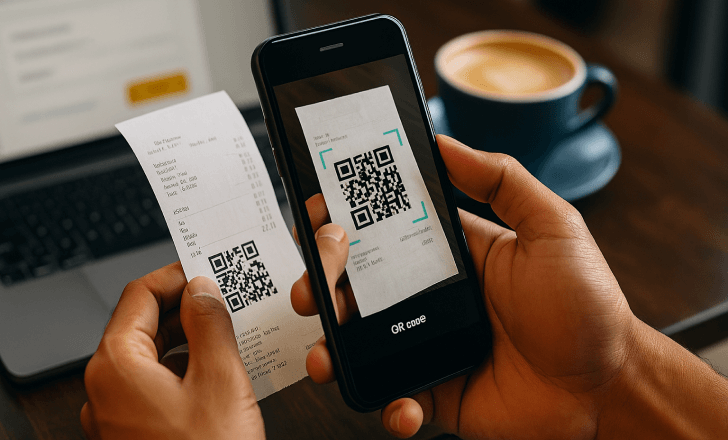
Can QR code receipts help with customer engagement?
Definitely. Customer engagement goes far beyond the transaction, and QR codes help maintain that momentum. You can invite customers to subscribe, follow your social media page, register a product, join a waitlist, or participate in surveys — all through a code printed directly on the paper receipt.
This is especially important for brick-and-mortar businesses that want to grow their online sales. Receipt QR codes bridge the gap between physical and digital, giving you access to your customers even after they’ve left your store.
QR codes and campaign analytics
With QR Code KIT’s tracking capabilities, every scan provides data you can use to improve your strategy. You can measure:
- Scan volume and frequency
- Location and device type
- Conversion rates from scan to action
- Behavior across different print formats or store locations
These insights are invaluable when evaluating your campaign conversions and planning new initiatives. Over time, this helps you optimize both the content and placement of your receipt QR codes.
Boost app downloads directly from receipts
If you’ve invested in a mobile app, placing a QR code on receipts is a great way to increase visibility and get more downloads. Since the customer has already made a purchase, they’re more likely to see the value in downloading the app for order tracking, exclusive offers, or rewards.
Using a QR code to redirect to your app store page simplifies the process. With dynamic functionality, you can automatically detect the customer’s device and link them to the correct app version — a seamless path from receipt to download.
Improving loyalty and repeat visits
Receipt QR codes are a quiet powerhouse when it comes to loyalty programs. A QR code on receipts can prompt customers to join, collect points, or check their progress — instantly and intuitively. This not only encourages subsequent purchases, but also strengthens your relationship with existing customers.
Over time, offering perks through post-purchase interactions builds habits, fosters brand affinity, and turns occasional buyers into regulars.
From offline to online: Tracking real impact
The beauty of QR codes is that they redirect customers from the offline world to online assets you control — your website, app, or landing page. Because scans can be tracked, you get real-time visibility into how your offline channels are contributing to digital goals like website traffic, sales, or newsletter signups.
Even if you’re not running a formal promotion, simply allowing customers to revisit your services via a scannable link helps keep your business top of mind.
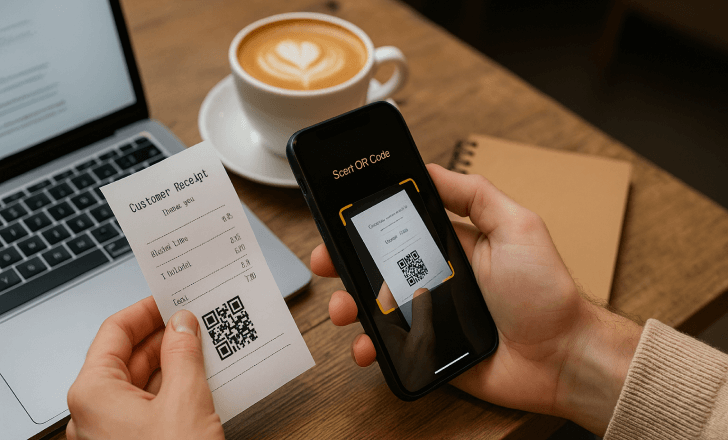
Do QR codes on receipts work for small businesses?
Yes — and arguably, they offer the most value to small and medium-sized businesses. QR codes are low-cost to create, easy to print, and highly flexible. They give independent shops, local cafés, fitness studios, and beauty salons the ability to engage customers with professional tools — no large team or budget needed.
You can start simple, such as using a QR code to link to your website URL, then gradually expand to include promotions, reviews, and social engagement.
Printing best practices for receipt QR codes
To ensure a great scan experience, make sure your QR code prints clearly and consistently. Use a high-quality export like SVG format, and test the output on different paper sizes or receipt printers. Leave enough white space around the code, and avoid cluttering it with other elements.
You’ll also want to include a clear call to action, such as “Scan to get 10% off” or “Tell us how we did.” These small cues increase the number of customers who actually engage with your code.
How to generate QR codes for receipts
Generating QR codes for receipts is quick and easy with QR Code KIT. Just follow these steps:
- Sign up for a free account and go to your dashboard.
- Choose the QR code type — URL, app download, file, feedback form, etc.
- Customize the design to fit your brand.
- Export the QR code in SVG or PNG format.
- Add the code to your receipt template (digital or printed).
From there, you can update, track, and optimize your QR code content based on real-world performance.
